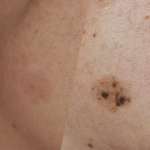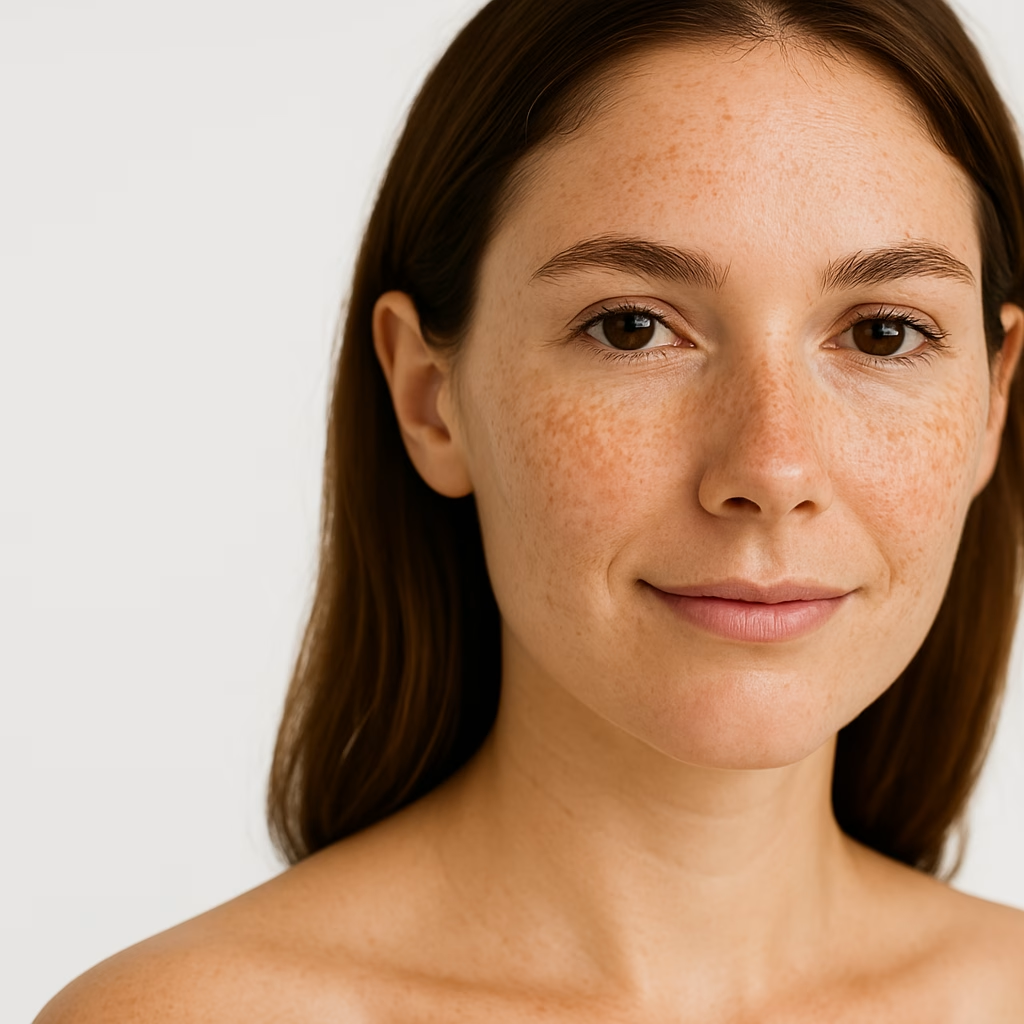Uneven skin tone, age spots, melasma, and sun damage? We can help.
What Are Pigmented Lesions?
Pigmented lesions are areas of the skin that appear darker than your natural skin tone due to an excess of melanin (pigment). These spots can range in color from light brown to dark brown, blue, or even black.
What Causes Pigmentation?
Pigmentation can develop due to a variety of internal and external factors, including:
- Sun exposure
- Hormonal changes (e.g., pregnancy, birth control)
- Aging
- Genetics
- Post-inflammatory changes (after acne or injury)
Common types of pigmentation include:
Sun spots, melasma, freckles, age spots, post-acne marks, and flat pigmented birthmarks.
What Treatments Do We Offer for Pigmentation?
We use a combination of professional treatments to target different types and depths of pigmentation:
- Laser with GentleMax Pro
- High-Frequency Device
- Chemical Peels
- DP4™ Microneedling
Which Treatment Is Right for Me?
Your practitioner will determine the most effective treatment plan based on your skin tone, pigmentation type, and skin sensitivity. Here’s a general guide:
- Laser GentleMax Pro – best for deep, stubborn pigmentation or larger, visible patches, especially on lighter skin tones.
- High-Frequency Device – effective for older, more established pigment spots, such as age spots and sun damage.
- DP4™ Microneedling – recommended for milder pigmentation or post-acne discoloration, especially around the face. It works by stimulating collagen and naturally renewing the skin. Safe for darker skin tones.
- Chemical Peels – ideal for superficial pigmentation and light skin tones. These peels gently exfoliate the top layers of skin to reduce pigmentation and improve radiance.
Is It Painful?
Most treatments are well-tolerated and virtually painless.
Laser and microneedling may feel like mild tingling or heat, while chemical peels may cause slight stinging. All treatments are performed with skin-cooling or soothing methods for your comfort.
How Often Can I Have Treatments?
- Treatments are typically done every 4–6 weeks.
- Most clients need 2–3 sessions depending on the treatment and severity of pigmentation.
- Your practitioner will guide you through the recommended schedule for your specific case.
How Long Does a Session Take?
Each treatment session takes between 45 to 60 minutes, depending on the area treated.
Is medical clearance required?
Yes, before booking a pigmentation removal session, you must:
- Consult your family doctor to ensure there are no cancerous concerns associated with the pigmentation.
- Fill out a mandatory consent form stating that you have checked your pigmentation with your doctor and received medical clearance to proceed.
We cannot treat any pigmentation that appears suspicious or has not been cleared by a medical professional.
Pre-Treatment Instructions
To prepare for pigmentation treatment:
- Avoid sun exposure and tanning (including self-tanner) for at least 6 weeks before your session.
- Discontinue active skincare ingredients such as: glycolic acid, lactic acid, salicylic acid, retinol or any chemical peels or exfoliants These must be stopped 6 weeks before and 6 weeks after your treatment.
- Your skin should not be irritated, inflamed, or sunburned on the day of your appointment.
Post-Treatment Aftercare
- Use broad-spectrum sunscreen SPF 50 daily for at least 6 weeks after treatment.
- Avoid direct sun exposure to prevent new or worsened pigmentation.
- Do not use active ingredients (glycolic, salicylic, retinoids) during the healing period.
- Avoid harsh exfoliants and heat (hot baths, saunas) for 3–5 days.
- Allow any flaking or crusting to fall off naturally.
Failure to follow aftercare instructions may result in post-inflammatory hyperpigmentation or delayed healing.

Safe, Personalized Solutions for Even Skin Tone

